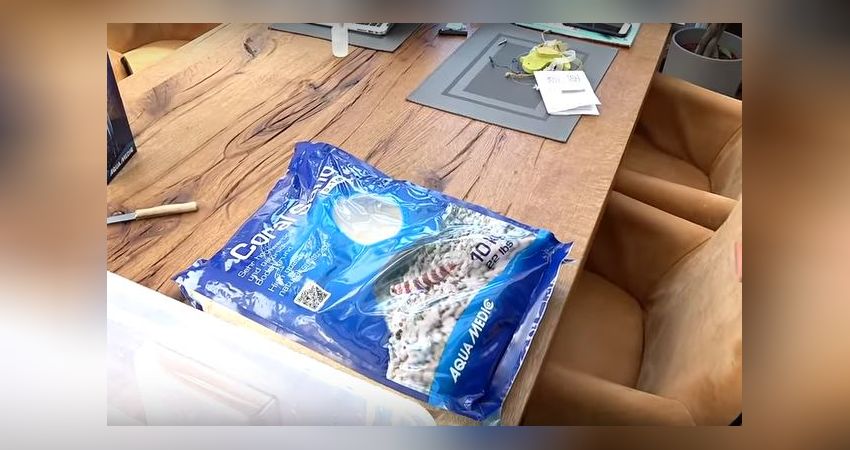How a marine aquarium is created- Part 9: Substrate - sand - comes into the aquarium. Which is the right one?

The substrate has an enormous influence on the aquarium. This concerns the grain size of the sand, the layer height, but also the sand itself. We strongly advocate natural substrate here.
Fine Sand, Living Sand, White Sand, or normal Coral Sand? ... yes, that is the question here.
Here you can see the installation of the substrate for our 400 litre mini-reef.
We have consciously decided to use natural substrate and thus clearly against the so-called white sand types also offered in the trade. These are usually offered with nice-sounding names from some island or other. They are not artificial, as they are also mined, but anyone who has ever had the material in their fingers and looks at their fingers ......

Calcium carbonate (CaCO3) is one of the most widespread compounds, especially in the form of sedimentary rocks. Calcium carbonate occurs mainly in the form of calcite and aragonite. Calcium carbonate is the main component of sedimentary limestone and metamorphic marble.
It is important to remember:
.When phosphate combines with calcium carbonate in seawater, calcium phosphate is formed on the surface, which is hardly soluble. For this reason alone, the choice was clear: a natural sand should be used. Of course, it has to be washed so that no residues get into the pool. As a rule, 3 glasses of water are sufficient.
As you can see in the video, we first had pure fine sand, but in the meantime, due to drifting of the sand, we have introduced the lowest possible humidity on the right side of the aquarium.
In summary, the brand itself does not matter, of course. It should just be natural substrate.
Summarising the brand itself, of course, doesn't matter.
How do you like this article?
Info
Author

Bookmark
Comments
Topics
Similar articles
- 31 - Surgeonfish Part 3
- 17 - Part 4 Filter systems - Berlin system
- Photographing under blue light - 4 clip filters in comparison
- How a marine aquarium is created-Part 13: The PH value
- How a marine aquarium is created Part 31: No more filter socks!
- How a seawater aquarium is created Part 11: the skimmer is installed
- How a marine aquarium is created-Part 18: Supply KH, calcium and magnesium
- How a marine aquarium is created-Part 6: The recirculation pump
- How a marine aquarium is created Part 48-49: The new Maxspect Jump LEDs L165. 2 videos available
- 16 - Part 3 Filter systems - The Jaubert system
Comments To the top
Erst einmal vielen Dank für die Mühe die Ihr euch mit den Videos gemacht habt.
Eine Frage :
Welche Körnung habt ihr beim Korallensand genommen?
LG Klaus
Vielen Dank fürs Lob :-)
Lieben Gruß
Robert
Please register
In order to be able to write something yourself, you must register in advance.







